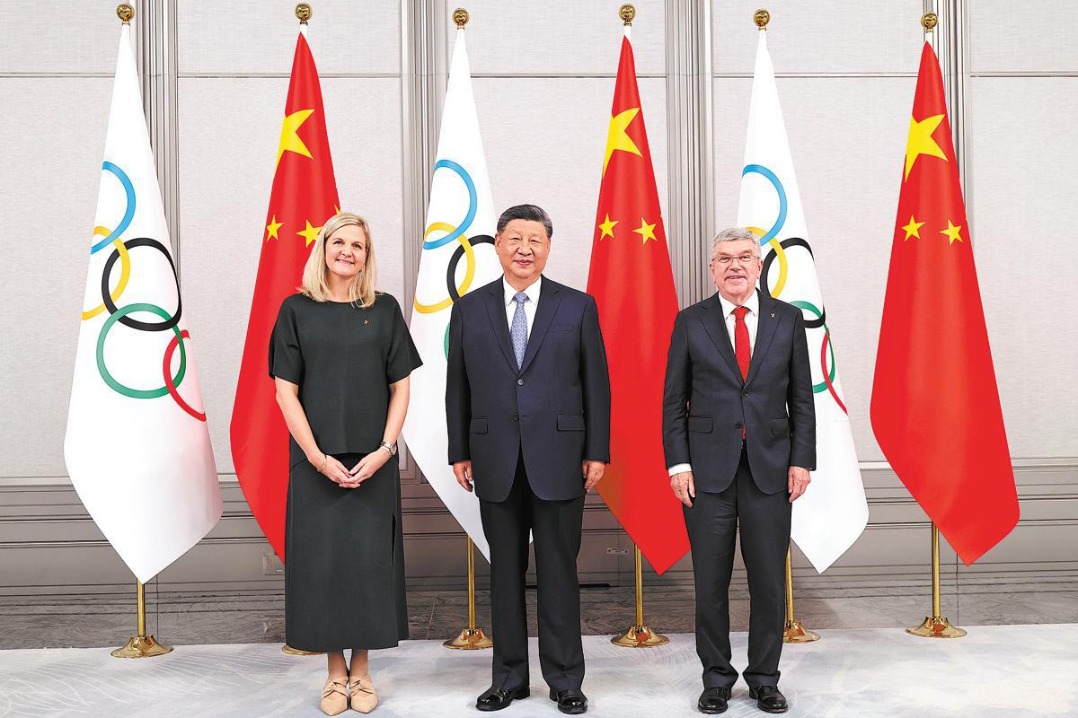Experts' takes on Chinese economy in 2023

FDI conducive to forming virtuous cycle

Just as Chinese leaders have repeatedly emphasized China always insists on reform and opening-up. Since the 20th National Congress of the Communist Party of China, the country has steadfastly pursued high-level opening-up to the world, achieving significant milestones in attracting and utilizing foreign capital.
In the first three quarters of 2023, China has maintained its position at the forefront of global foreign investment, with actual utilization showing a stable and positive trend, marking a promising start for economic development.
To better absorb and utilize foreign capital, China needs to enhance the appeal of its huge market and adjust the structure of foreign investment.
It is crucial to attract and utilize foreign capital from developed Western countries, balance the overall structure of foreign investment, diversify the investment risks, and strengthen links with the global supply chains.
The share of foreign direct investment from Western developed nations in China's total has been declining. Although the investment from the European Union in China increased by 92.2 percent in 2022, the newly established enterprises by EU countries in China only accounted for 7.6 percent of the total in the same year, with utilized foreign capital making up 6.2 percent. Therefore it is imperative to attract and utilize capital from Europe and the United States.
What's more, it is imperative to facilitate gradual shift of foreign investment to central, western, and northeastern China, optimizing regional layout and promoting coordinated regional development.
Currently, foreign investments in China are heavily concentrated in the economically advanced eastern coastal areas. The transfer of foreign investment to inland regions faces multiple challenges. This situation weakens the contributions of foreign investment to economic growth in China's central, western, and northeastern areas, exacerbating regional wealth disparities, and hindering the coordinated development of China's regional economies.
Efforts to guide foreign investment towards inland regions should focus on three key areas:
Implementing the 2022 Catalogue of Encouraged Industries for Foreign Investment to incentivize foreign investment in environmentally friendly industries in central, western, and northeastern regions, as well as Hainan province;
Leveraging international transportation channels such as the New International Land-Sea Trade Corridor and the China-Europe Railway Express, while advancing infrastructure in the aforementioned regions, so as to reduce the trade and logistics costs;
Encouraging collaborations between foreign-invested enterprises in China's eastern and inland regions, through mechanisms such as value and benefit sharing, to foster cooperative industrial transfer.
Foreign investment not only propels direct economic growth in China, it also sparks a ripple effect, driving technological advancements and innovation. This, in turn, boosts domestic product and process innovations, fostering growth in both consumption and product quality. As the scale of foreign investment in China continues to expand, it becomes crucial to blend the strategies of "attracting investment" and "attracting intelligence". This dual approach aims to enhance the quality of foreign capital utilization, maximize learning effects, and strengthen the processes of introduction, cooperation, digestion, absorption and re-innovation.
China should incentivize foreign-invested enterprises to set up R&D centers in the country. These centers, integral to China's technological innovation ecosystem, can leverage the spillover effects of foreign investment, promoting deeper technological collaboration and openness.
It should also seek to foster collaborations between foreign-invested enterprises and domestic companies in joint technological research, development, and industrial applications. Aligned with domestic consumer demand, this would promote synergy in innovation, accelerating the iterative evolution of traditional consumer goods and advancing forward-looking functional research to meet diverse domestic market needs.
Foreign-invested enterprises should also be encouraged to boost the quality and capacity of service offerings.
Data from the Ministry of Commerce reveal that in 2022, China attracted a substantial $131.59 billion in foreign investment in the services sector, constituting nearly 70 percent of the total foreign investment in the country. Of this, newly established foreign-invested enterprises in high-tech services reached 10,019, with an investment of $50.14 billion, accounting for 26.5 percent of the total foreign investment. As China's economy rapidly expands and urbanization progresses, the demand for services continues to soar, attracting significant foreign investment into this sector. It is imperative to encourage foreign-invested enterprises to enhance the quality and expand the capacity of their services, creating more domestic market demand through high-quality service offerings.
Reforms should be accelerated in the existing free trade zones and lead pilot projects in the free trade ports. Comprehensive trials should be carried out aimed at expanding the openness of the service industry and aligning it with international trade rules, so as to actively construct an open service system compatible with high international standards.
Market access restrictions for foreign investment in the service industry should be further relaxed, and the role of foreign investment as a bridge connecting China with international markets should be strengthened to ensure smooth dual-circulation.
Revising and expanding the Catalogue of Encouraged Industries for Foreign Investment can be considered to sensibly reduce the negative list for foreign investment in the service industry; channel foreign investment into key modern services with higher market access restrictions, addressing the gaps in the supply of quality goods and services in the domestic market, and promoting effective alignment of supply and demand in the service industry to better cater to market needs.
Looking ahead, despite the ongoing complexities of the global investment landscape, it is believed that as the international economic environment stabilizes, the scale and structure of foreign investment in China will continue to optimize as China's business environment further improves, and the advantages of the country's market size and complete industry chains become more pronounced. This optimization will not only drive market demand through superior supply but also fuel consumption growth and upgrades, unlocking the potential of the domestic market.

The views don't necessarily represent those of China Daily.
































